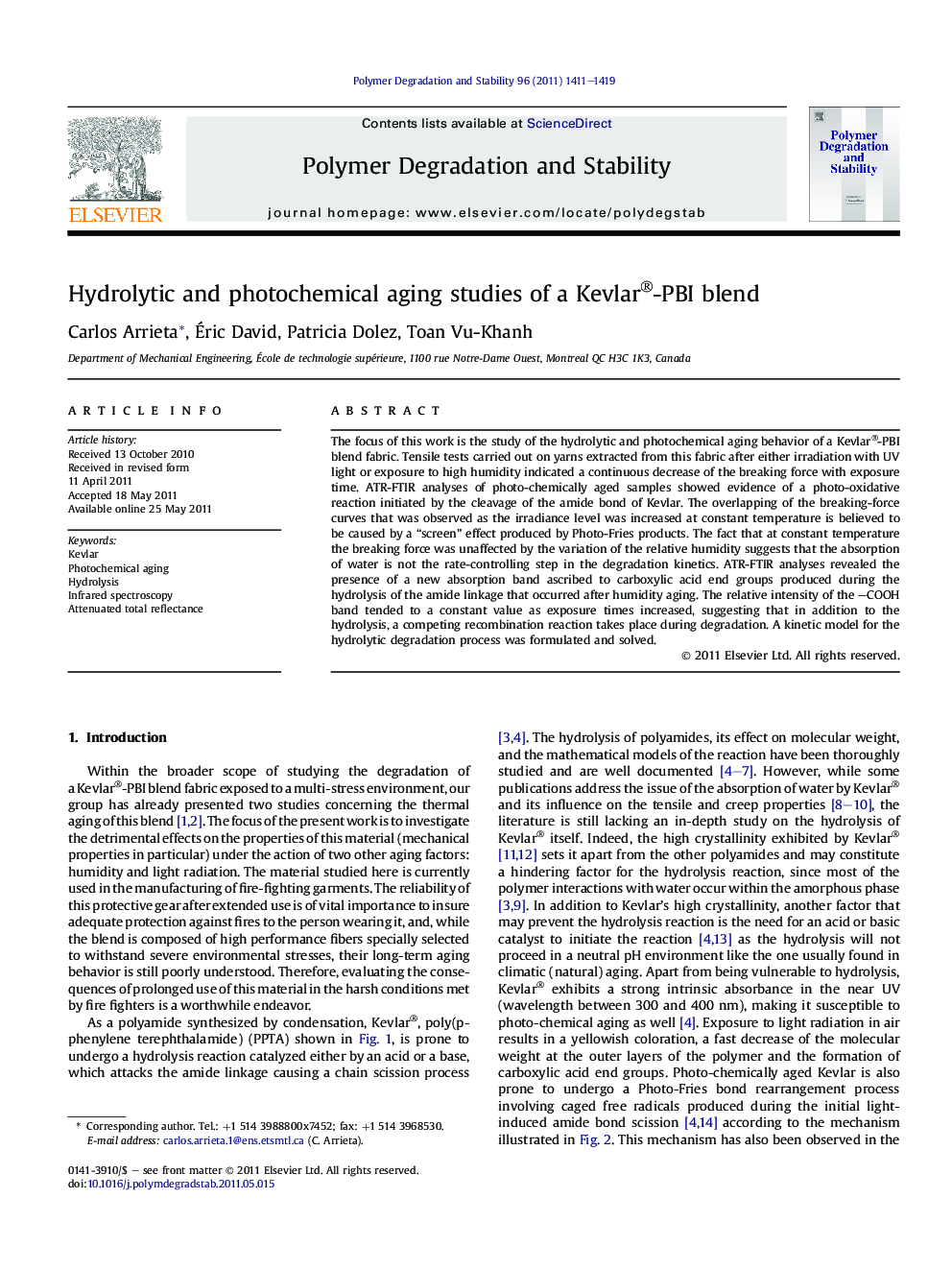| Article ID | Journal | Published Year | Pages | File Type |
|---|---|---|---|---|
| 5202605 | Polymer Degradation and Stability | 2011 | 9 Pages |
The focus of this work is the study of the hydrolytic and photochemical aging behavior of a Kevlar®-PBI blend fabric. Tensile tests carried out on yarns extracted from this fabric after either irradiation with UV light or exposure to high humidity indicated a continuous decrease of the breaking force with exposure time. ATR-FTIR analyses of photo-chemically aged samples showed evidence of a photo-oxidative reaction initiated by the cleavage of the amide bond of Kevlar. The overlapping of the breaking-force curves that was observed as the irradiance level was increased at constant temperature is believed to be caused by a “screen” effect produced by Photo-Fries products. The fact that at constant temperature the breaking force was unaffected by the variation of the relative humidity suggests that the absorption of water is not the rate-controlling step in the degradation kinetics. ATR-FTIR analyses revealed the presence of a new absorption band ascribed to carboxylic acid end groups produced during the hydrolysis of the amide linkage that occurred after humidity aging. The relative intensity of the -COOH band tended to a constant value as exposure times increased, suggesting that in addition to the hydrolysis, a competing recombination reaction takes place during degradation. A kinetic model for the hydrolytic degradation process was formulated and solved.
⺠UV exposure of Kevlar®-PBI yarns caused a decrease of tensile breaking-force (TBF). ⺠FT-IR spectra of UV aged yarns shows the formation of -COOH groups. ⺠Overlapping of TBF curves suggests a “screen effect” caused by Photo-Fries products. ⺠[-COOH] along with ATR FT-IR results were used to model the hydrolysis of Kevlar®. ⺠According to the model the effect of hydrolysis on molecular weight is negligible.
